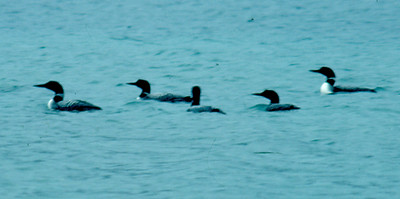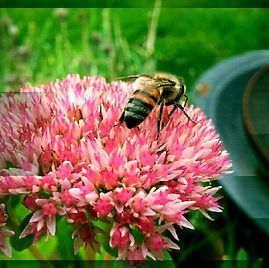
Action: Make Your Property Wildlife Friendly
Enhancing your property to make it wildlife friendly can be a great and easy project for families, schools, businesses, and communities! An Eco Friendly garden can reduce maintenance cost (no mowing!) increase property values (Trees = $). By creating natural habitats, we also contribute to local wildlife conservation and stewardship.
Wildlife can come in many different forms. Creating a habitat for them not only helps to conserve, but it also plays a big role in our own food security as many are important pollinators. Creating wildlife gardens can be done at home, school, work, or as part of a community initiative.
There are many types of projects available, for any age group. Going at your own pace, enjoying nature, and creating something with lasting benefits is the ultimate goal. On this page are a few tips and tricks for your Wildlife Friendly Property Habitat! If your SAM community would like more information on how to enhance community green spaces contact us here.

Nature holds the key to our aesthetic, intellectual, cognitive, and even spiritual satisfaction - E.O. Wilson
Centerville-Wareham-Trinity, NL
Make a Plan
Likely one of the most important steps, start by making a plan. There are many great ideas for enhancing backyard habitats, but not all may be suitable for your property or situation. Before you start, draw out a plan of what you hope to accomplish. Are you interested in birds, bugs, native plants? Take a look at our sample backyard habitat below and check out our resources section at the bottom of this page for links to suppliers and informational resources (Please note we don't endorse any particular suppliers and cannot guarantee products).

There are many plants to choose from when creating habitat for wildlife. From trees to shrubs, flowering to fruiting, your choices will depend on what wildlife you want to attract. Many butterflies like Joe-pye weed, wintering birds will eat mountain ash berries, and bees are most attracted to purple flowers. Bugs and bees play vital roles in backyard habitat as pollinators, decomposers, and food sources for other wildlife. Encouraging beneficial insects to enjoy your habitat will in turn attract other wildlife, and keep populations of 'bad' bugs in check. Keep in mind the 4 elements of any habitat, (food, water, cover and nesting) when choosing plants! Check out the tips below from EasyEarth.com, The Conversation, and The David Suzuki Foundation and for a list of native NL Plants check out Digital Flora NL.
Planting your Habitat

Zurel Property from E. Fowler
-
Trees and shrubs are an important element of backyard habitats they can provide shelter and nesting areas for a large number of wildlife. Flowering, fruiting, seed and nut trees/shrubs provide food for wildlife. Coniferous trees can provide year round shelter as they don't lose their leaves in the winter. Deciduous trees can provide shelter and shade in the summer and leaf litter can be an important habitat for many bugs and insects.
-
Native plant species will ensure success in your habitat. These plants will already be adapted to the growing conditions and will produce food, shelter, and nesting areas compatible with local wildlife. Visit local nurseries to get advise on what is native or visit Digital Flora NL.
-
Thinking in layers as a backyard habitat should have levels of multi-storied foliage for shelter and food. Plant shrubs next to small trees, small trees next to larger trees etc. This will create clusters of diverse habitat because some plants will provide shelter while others will provide food.
-
Flowering plants - hummingbirds are attracted to red tubular flowers, and bees and butterflies enjoy a lunch of brightly colored flowers. Having a diverse mix of flowering plants will ensure a great diversity of wildlife in your habitat. Flowers produce sugar (nectar) and protein (pollen), the main diet for adult insects and birds!
-
Plant around water features Insects and birds that are attracted to water and will appreciate the shelter provided by water loving plants. Water features will also attract a more diverse wildlife population.
-
Snags (dead trees) are beautiful - they provide habitat for insects, and in turn these insects provide food for many bird species. Think low maintenance and leave dead and dying trees in your habitat. Leave some weeds too! Many weedy species are the favorite food of native pollinators

Honey Bee in backyard, St. John's, NL
-
Variety is key, as there is no single best combination of flowers for wild bees, but see what works in your geographic area and avoid mono cultures of a single flower, this will only suite a small number of species
-
Keep the Food Chain Healthy and avoid using any chemical pesticides or herbicides in your garden as this will disrupt the food chain by damaging microbes in the soil that are consumed by insects, birds that consume the insects, and eventually back to us!
-
Nuisance species are not useless - wasps and fly species are pollinators as adults, and as larvae they control populations of other pests.
-
Mowing less often and outside of peak flowering times can help pollinators and plants!
Attracting Birds with Native Species
If you want to attract particular bird species to your yard you have to provide them with their favorite foods! See the list below for just a few examples!
-
Balsam fir - Blue jays, Robins, Sparrows, Tanagers
-
Spruce trees - Sparrows, Warblers, Pine Siskins, Nuthatches, Crossbills
-
Larch trees - White winged Crossbills, Chickadees
-
Mountain Ash - Cedar Waxwings
-
Red Osier Dogwood (Cornus sp.) - Robins, Thrushes, Vireos, Juncos, Kingbirds, Warblers
-
Juniper - Thrushes, Flickers, Warblers, Sparrows
-
Amelanchier species - Robins, Waxwings, Grosbeaks
-
Crabapples (Malus sp. ) - Robins, Thrushes, Catbirds, Waxwings, Pine Grosbeaks
-
Northern Bayberry - Catbirds
-
Viburnum sp. - Robins, Finches, Catbirds, Waxwings

Black-capped chickadee in Larch, Pippy Park
Many birds also will use birds houses and next boxes. Check out our page on Birds in Newfoundland and Labrador for Bird Nest Box Instructions.

Private Landowner Stewardship Agreement

As a private landowner in Newfoundland and Labrador, you can support habitat conservation and environmental stewardship by signing a Private Landowner Stewardship Agreement. With a Private Landowner Stewardship Agreement, you agree to govern the activities on your own property so that you avoid potentially harming any aquatic, wetland, upland or other wildlife habitats, and the wildlife within those habitats. By signing this Agreement, you also agree to encourage environmental stewardship and promote the positive wildlife and wildlife habitat benefits of signing a Private Landowner Stewardship Agreement.
If you are interested in in learning more about Private Landowner Stewardship Agreements, or would like to seek the advice of SAM prior to any development on your property to ensure there is no removal or reduction of available viable wildlife habitat, you can contact us here.
Jo Mark and Sarah Zurel with their signed Private Landowner Stewardship Agreement on their property in the Town of Portugal Cove-St. Philips (SAM Photo)
Resources

-
The Lake Protection Handbook - A self assessment tool for shoreline property owners

Food
Consider:
Native flowers with nectar, bird feeders, leaves
Water
Consider:
Bird baths, shallow dishes for bee baths, ponds
Cover
Consider:
Trees, shrubs, leaves, decaying logs, rocks
Nesting
Consider:
Bird houses, butterfly shelters, bee hives
Habitats provide the necessities of life so they ALL include the following:
The 4 basic needs of any wildlife habitat are food, water, cover, and nesting. Keep those in mind when creating habitat in your backyard!

